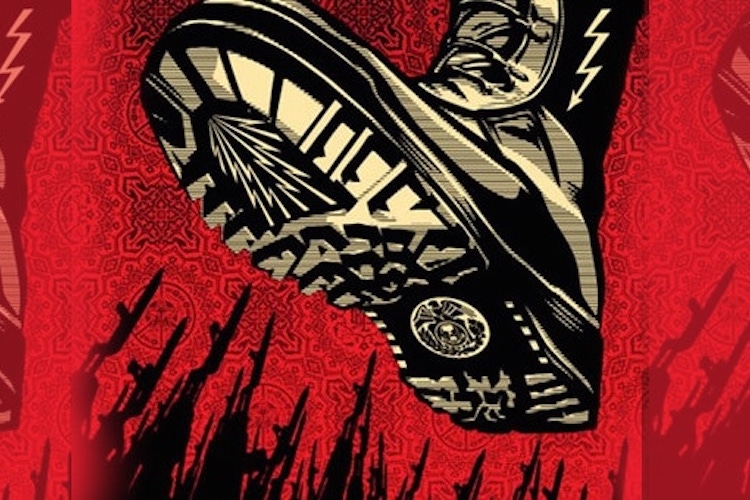How, after a summer respite, the Apennines seem to plunge into a coronavirus nightmare again.
From a country that until recently was considered one of the most prosperous in terms of the epidemiological situation, Italy, like Spain and France, is again moving into the category of “dangerous”. The growth of new infections, however, is not as rapid as that of neighbors, but quite noticeable. Even before October 10, it was possible to keep the daily increase within 2 thousand cases, but the threshold of 6 thousand has already been overcome. The number of new infected will increase, there is no doubt about it.
Six Dwarfs of Snow White
The Italian government has just adopted a new order, in which for the first time since the end of May, when the quarantine ended, restrictive measures are not lifted, but introduced. Among them: the end of team games for non-professional athletes, limiting the opening hours of drinking establishments in the evening, reducing the number of people invited to family ceremonies such as weddings, christenings and funerals to 30 people. While gyms, swimming pools and schools are open, the authorities assure that they will not switch to remote training again, as well as will not introduce a new nationwide total quarantine. The country simply cannot afford it, either from an economic or social point of view.
As in the entire period of the pandemic, certain decisions of the authorities are criticized and met with outright irony. So, many jokes were generated by the recommendation not to invite more than six guests. Images from “Snow White” immediately appeared on the Internet, where she kicks out the seventh dwarf. On the reproduction of the fresco “The Last Supper” two policemen were added to write out fines for the apostles, who are exactly twice the recommended number of participants in the feast.
Against this background, Prime Minister Giuseppe Conte assured that the country will not turn into a police state and no one intends to send law enforcement officers to control private apartments. At the same time, he also strongly recommends not to disdain masks even at home – almost 70% of new infections occur in the bosom of family and friendly companies. At the same time, many pay attention to the problem of crowded public transport in large cities. And no one is in a hurry to solve it.
Summer “calm”
The second wave has been frightening for a long time, and it would be naive to believe that it could have been avoided. Its offensive, nevertheless quite unexpected, only exacerbated the issue of the summer “lull”. Why did the virus suddenly recede, give a break? The most obvious answer is quarantine. In Italy, it was introduced in early March and lasted until the second half of May. As the experience of the country, the first victim of a pandemic in Europe, has shown, there is no more effective means of countering the spread of coronavirus than self-isolation. In March, the Italians were seriously scared and for the most part obeyed the orders of the authorities. Despite the widespread stereotype about the indiscipline of the southern peoples, Italians – and the pandemic has demonstrated this once again – are quite manageable and led people.
The effect of almost three months of quarantine, namely a decrease in the number of infections, coincided with the onset of summer. Many people said that at high temperatures, the virus spreads more slowly and the viral load drops, although no one has scientifically proven this. But the fact is that during all three summer months the number of daily infections was kept at the level of 200-300. Hundreds of patients remained in hospitals, and intensive care units, previously suffocating from several thousand heavy covids, were practically empty. And this is another mystery of the new coronavirus.
In a word, people began to live as if in the old way: sea, mountains, air, good food and wine. Of course, many refused to travel abroad. But the first “swallows” made themselves felt quickly. The slightest movement led to the emergence of new foci. One of them was formed on the prestigious Emerald Coast on the island of Sardinia, and the infection affected the rich and famous who love to visit him, including the entire Berlusconi family and the former prime minister himself. Someone began to bring COVID-19 from resorts in Croatia and from Greece. In Spain, new infections have already crept. And those arriving from these countries began to take tests for the new coronavirus without fail. Now France, Great Britain, Belgium, as well as a number of other countries are already on this list. From somewhere, entry is simply prohibited, for example from Brazil.
Italy is overwhelmed by the second wave
The first noticeable surge in infections occurred in the second half of August. But everyone continued to pretend that nothing was happening. August bliss is sacred in Italy. In general, they are accustomed to masks, for many they have become a fashion accessory (as well as a subject of designer fantasy). In mid-September, as promised by the government, schools were opened, although it was also not without controversy, criticism and exposure of the system’s unavailability.
To date, there is no division into regions where the coronavirus is more common (north) and where it is less common (south), as it was in the spring, when the southern regions were saved. And this is especially troubling for the authorities, including regional ones, because if hospitalizations begin to grow proportionally, the hospitals in the south will not be able to withstand the load. So far, the fundamental difference between the current situation and what Italy experienced in the spring is that the number of hospitalized people is several times less. While. This is explained, in particular, by a decrease in the average age of those infected (from 60 to 40), and therefore, the disease caused by the new coronavirus is more easily tolerated by many. Some of the experts say that doctors have learned to heal better, learned more about the unpleasant surprises of COVID-19. And to prevent them, hospitalization is often needed.
And one more important observation: it is impossible to compare the current infection rates with the spring ones. Just for the reason that then only 30 thousand tests were carried out, but now they, including express, drive-in, are done up to 130 thousand per day. People stand in lines for hours to get tested. Many infected people are detected during a banal screening, which no one could even think of in the spring, because they had to cope with emergency cases. So the assumption that in the spring the real scale of infection was many times greater is quite justified. Then the official statistics recorded only cases with a “symptomatic course”. The virus, most likely, has not changed, and the solution is one – the vaccine.
The main fear now is uncertainty. People still only pretend that normal life has returned. But every day, with a sinking heart, you are afraid of a call from a kindergarten or school with a notification about the introduction of class quarantine due to the identification of an infected student or teacher. And it is even worse if they are told to urgently take their child, who has already been placed in an isolated room due to the low temperature. “Man proposes, but God disposes” – now sounds more relevant than ever.
Spring Lockdown Economic Price
In a purely economic sense, this is a decrease in GDP by 8-10%. For Italy, where economic growth in recent years has been virtually in lethargic sleep, this is devastating. Hundreds of thousands of jobs have been lost, although, oddly enough, against the background of existing problems, this damage seems to be less noticeable than, say, in the same more prosperous France or Spain. The tourism and cultural sectors, referred to as “Italian oil”, have been the hardest hit. Although in local tourism, everything was not bad everywhere. The Italians flooded their own seashores and mountain resorts. In many places popular with wealthy Italians, things have gone even better this year than in normal years, because, having stayed at home, this category of the population spent the money in the service sector that usually went on holidays abroad.
However, in general, representatives of the tourism sector say that the poorer domestic tourist is not able to compensate for the absence of more generous guests from the USA, Russia, Brazil, India and other countries. The greatest losses are incurred by the “art cities”. Venice in the summer had 60% fewer tourists, which means less income for a city that lives off tourism. A dramatic situation in some areas of Rome. Of course, the lockdown also affected the psychological health of the population. The magnitude of the damage in this sense is difficult to quantify, and most likely it will have an impact in the long term, especially in children, psychologists say. There were, of course, isolated cases of domestic violence, but in general there were no mass divorces.
“A new beginning”
There is also a relative positive in the situation around the pandemic. Italy should receive the lion’s share of funds from the European Recovery Fund. By the way, the resentment towards Europe, which appeared at the beginning when the European partners did not seem to show sufficient solidarity, seemed to have passed. There is a feeling that everyone is in the same boat.
The authorities talk about a “new beginning”, about incredible opportunities for renewal, building a new, more environmentally friendly economic system. It seems that in this endeavor they are even sincere. But then there is a shadow of the threat of the mafia, which is already encroaching on a tidbit, penetrating with its tentacles of the “octopus” into legal business everywhere. Innovative projects are stifled by a bureaucracy, which, despite all the bellicose promises, has so far failed to cope with. But one gets the impression that in a certain sense the people seem to have become a little happier. It’s as if the pandemic taught us to rejoice at the little that it had deprived for several months. Italians are reviving, and the quarantine period has shown that the nation is much more united and committed to its values, including state power, than it seemed.
Dark Period Symbols
Over the past months, there have been many stories engraved in memory. Many of them are reflected in the recently opened photo exhibition of the Foreign Press Association “Lockdown in Italy – through the eyes of foreign journalists”. This is how to remember everything. Many of those shots flew around the world and became symbols of the “dark period”, as the past spring is sometimes called in Italy. Of course, we cannot forget the caravan of military trucks that transported the coffins with the victims of the coronavirus infection from Bergamo. Most of them were old people, and they died alone – they did not let their loved ones. Thoughts about this break my heart to this day.
But I especially remembered a small note in one of the newspapers – a letter of recognition from a student. It was published in the summer, when many restrictions were lifted and even discos were opened. The girl wrote that she followed all the precautions, did not meet with anyone, but was seduced by her best friend’s birthday, which was celebrated in a nightclub. As a result, she became infected, there were no symptoms, so she learned about the coronavirus when her father was admitted to the hospital with complications. In an open letter, the girl reproached herself. We do not exclude that that publication had a certain ideological task and the letter was written by the editorial board. But it raises a moral problem that has plagued the entire pandemic – responsibility and guilt if you become, even through no fault of your own, a carrier of infection. A Nightmare at the thought of who needs to be warned!













